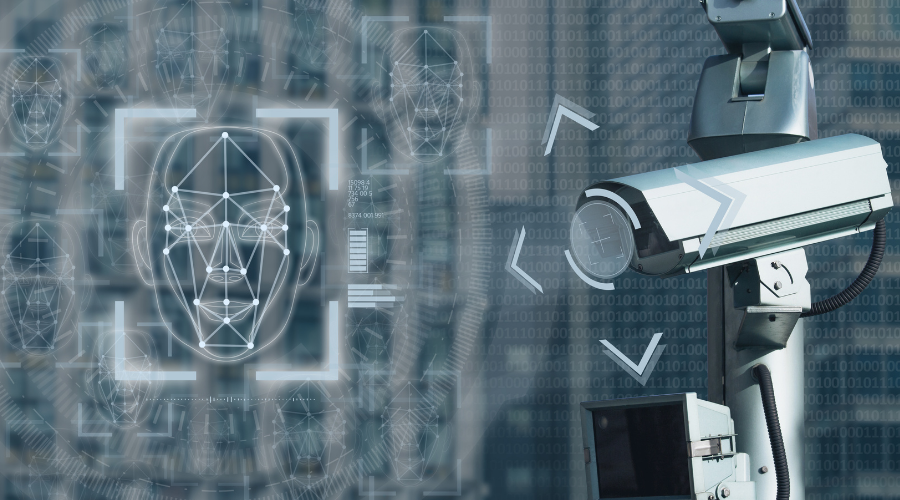How to use Face Re-Identification to Obtain Accurate Employee and Visitor Foot Traffic Data

Video Intelligence for Operations, Security, and Business Productivity
Quantitative and qualitative visitor traffic statistics are extremely valuable to a variety of teams in an organization, such as security, operations, and marketing, for starters. Property managers are keen to understand how many visitors or customers pass through their buildings, how many of them are repeat visitors, and how they navigate those buildings. Beyond those important data points, staff managers also want to understand the same metrics about their own employees. These needs apply to any facility that has hundreds or thousands of visitors, such as an airport, museum, retail store, shopping mall, sports stadium, cruise ship, or casino.
For example, airports might want to know how many people pass through the airport, hourly, daily, or weekly; such metrics are not only important for operations planning, but could be critical data points for local governmental authorities trying to understand regional transit. Typically, managers can provide only an estimate, based on passenger and flight data, but lack the tools to granularly understand how many people pass through each specific area, in order – for example – to quantify the value of a particular retail space in a terminal.
Especially during the current COVID-19 pandemic – where many businesses have occupancy restrictions – one solution has been to dedicate staff to stand at building entrances with manual click counters to keep track of how many people entered a building. However, human observations are grossly insufficient for monitoring traffic patterns or people counting. Emerging technologies, such as intelligent video analytics, are becoming strategic investments for monitoring real-time traffic and delivering aggregated traffic reports.
AI-driven video analytics identifies, classifies and indexes objects in surveillance video footage to make it searchable, actionable and quantifiable. It detects, identifies, extracts and catalogs objects in video and then drives analytic activities based on the extracted and classified data. The analysis is performed continuously, as well as on demand to enable surveillance operators to improve situational awareness in real-time and over time. Since many buildings already have video surveillance networks, video content analytics software can enhance existing infrastructure to derive valuable video data and compile that data into easy-to-understand reports.
Tracking Unique Guest Volume and Activity
Among the various types of object recognition a comprehensive video analytics system may offer is facial recognition, a biometric technology used to identify individuals based on existing digital image sources. In other words, facial recognition can be used to recognize a specific identify based on an image of a “known” face. It can be used for identifying or locating missing persons, criminal suspects, employees, or persons of interest across video surveillance networks. Whereas intelligent video surveillance enables count-based analytics to quantify the aggregate number of people entering a store or building, when coupled with face recognition abilities, video analytics platforms can offer more granular insight into unique, bounced or repeat visitor traffic. Using face re-identification capabilities, managers can differentiate between unique traffic, by recognizing faces and anonymously drawing data based on unique identity recognition. Face re-identification allows managers to derive data based on recognized individuals, which significantly allows managers to exclude employees from visitor counts and explore employee behavior patterns in addition to reporting on unique guest behaviors.
Measure Associate Traffic and Productivity
Are associatess generally circulating in all areas of a store, as they should be, to be most useful and productive? Or are they spending too much time in areas where they are not needed? Video content analytics can use face recognition to track the employee footfall and filter data to observe employee traffic and navigation throughout a building. That information can be analyzed through heatmaps analysis or dashboards to track employee engagement and distribution throughout a site and make intelligent decisions.
Employers might uncover that associates tend to group closely together, leaving parts of a retail store unattended; or that it would be more effective to unevenly distribute staff across an airport terminal to better respond to fluctuating visitor traffic peaks throughout a day.
Ultimately, face re-identification is yet another way traditional video surveillance investments can be transformed to offer granular, accurate data and business intelligence that managers can use to more effectively plan staffing, optimize building design and floor layouts, and measure new vs. repeat customers. Operations, security, and marketing teams make better decisions when they have accurate data about customer and employee traffic and behavior.
Signup to receive a monthly blog digest.